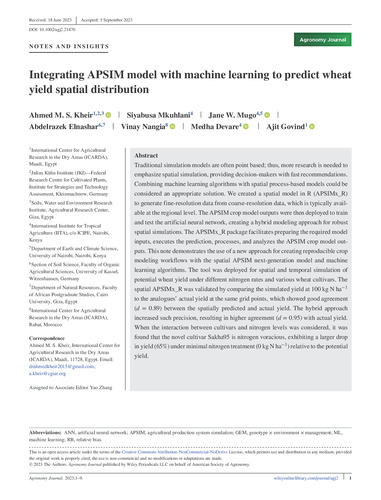Integrating APSIM model with machine learning to predict wheat yield spatial distribution
Abstract
Traditional simulation models are often point based; thus, more research is needed to emphasize spatial simulation, providing decision-makers with fast recommendations. Combining machine learning algorithms with spatial process-based models could be considered an appropriate solution. We created a spatial model in R (APSIMx_R) to generate fine-resolution data from coarse-resolution data, which is typically available at the regional level. The APSIM crop model outputs were then deployed to train and test the artificial neural network, creating a hybrid modeling approach for robust spatial simulations. The APSIMx_R package facilitates preparing the required model inputs, executes the prediction, processes, and analyzes the APSIM crop model outputs. This note demonstrates the use of a new approach for creating reproducible crop modeling workflows with the spatial APSIM next-generation model and machine learning algorithms. The tool was deployed for spatial and temporal simulation of potential wheat yield under different nitrogen rates and various wheat cultivars. The spatial APSIMx_R was validated by comparing the simulated yield at 100 kg N ha−1 to the analogues' actual yield at the same grid points, which showed good agreement (d = 0.89) between the spatially predicted and actual yield. The hybrid approach increased such precision, resulting in higher agreement (d = 0.95) with actual yield. When the interaction between cultivars and nitrogen levels was considered, it was found that the novel cultivar Sakha95 is nitrogen voracious, exhibiting a larger drop in yield (65%) under minimal nitrogen treatment (0 kg N ha−1) relative to the potential yield.

